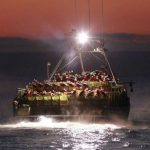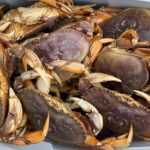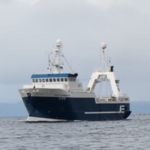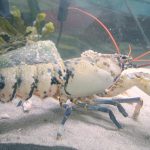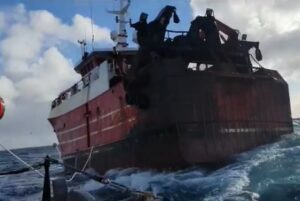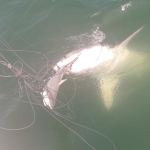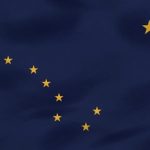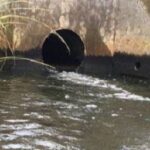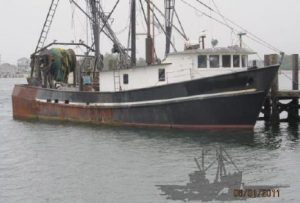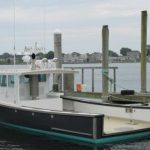Tag Archives: Gulf of Maine
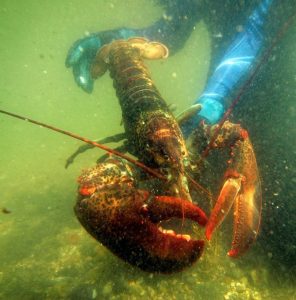
Maine’s lobster population will drop but fishery ‘not doomed’
The lobster population in the Gulf of Maine could decline by nearly two-thirds by 2050, according to a scientific study released this week. As bad as that sounds, scientists and industry representatives say the demise of the most valuable single-species fishery in the country is unlikely. “It doesn’t mean Maine’s lobster fishery is doomed,” said Andrew Pershing, chief scientific officer at Gulf of Maine Research Institute and a co-author of the study. >click here to read< 10:17

Gulf of Maine lobster boom over as population starts to decline
The Gulf of Maine lobster population will shrink 40 to 62 percent over the next 30 years because of rising ocean temperatures, according to a new study released Monday. As the water temperature rises – the northwest Atlantic ocean is warming at three times the global average rate – the number of lobster eggs that survive their first year of life will decrease, and the number of small-bodied lobster predators that eat those that remain will increase. Those effects will cause the lobster population to fall through 2050, according to a study by scientists at the Gulf of Maine Research Institute, University of Maine and National Ocean and Atmospheric Administration. >click here to read< 19:49 

Maine Lobstermen reject big changes in harvester reporting rules
Ask any lobsterman about the details of where and how he catches his bugs — what kind of bait he uses, how deep he sets his gear, how many traps on a trawl, how long those traps soak between hauls — and you’re likely to get a fisheye, if not a poke in the nose, in response. Still, that’s the kind of information the Atlantic States Marine Fisheries Commission wants to collect from lobstermen and Jonah crab fishermen working in the Gulf of Maine and, no surprise, the idea is unpopular. >click here to read<08:59
Maine opposing push to require all lobstermen to report catch data – >click here to read<

NMFS Approves “Majority” of Council’s Habitat Amendment
NOAA’s National Marine Fisheries Service (NMFS) has approved –with two exceptions –the New England Fishery Management Council’s Omnibus Essential Fish Habitat Amendment 2 (OHA2), paving the way for sweeping change to the existing network of closed and management areas in the Gulf of Maine, Southern New England, and Georges Bank. The changes will provide better protection for both fish and habitat while eliminating closures that no longer serve their intended purpose. click here to read the press release 16:20

It’s Maine Shrimp Season, Without the Shrimp
Sitting between Glen Libby’s desk at Port Clyde Fresh Catch and the armchair where his brother’s old dog, Red, likes to nap are two boxes full of “The Original Maine Shrimp Cookbook.” This slim spiral-bound volume includes contributions from various members of the brothers’ immediate family, whose shrimping history dates back nearly four decades in this coastal town about two hours northeast of Portland. Mr. Libby loves the small, delicate Northern shrimp, known fondly here as Maine shrimp, and so do customers at his processing and distribution plant. Photo’s, click here to read the story 22:12
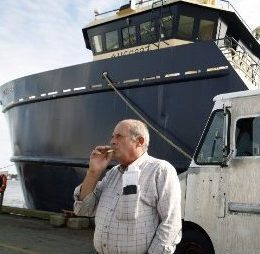
What’s fair in breaking up the empire of ‘the Codfather’?
Randy Cushman, a fourth generation fisherman in Maine, knows what the crimes of Carlos Rafael cost him.,,, Rafael, whose downfall came after he boasted of his scheme to undercover IRS agents posing as Russian mobsters, is now serving a 46-month sentence in federal prison.,,, Senator Elizabeth Warren fired off a letter in August warning of “needless, immense damage” if permits leave New Bedford. Governor Charlie Baker asked that the permits at least stay in Massachusetts. click here to read the story 07:16
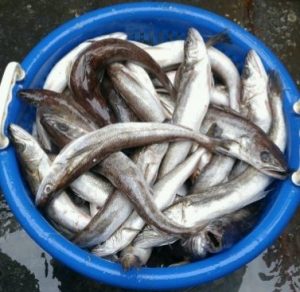
NEFMC: Scallops, Council Approves Framework 29 – Whiting, Approves 2018-2020 Specifics; to Send Amendment 22 to Public Hearing
The Council took two actions today related to small-mesh multispecies, which include two stocks of silver hake and offshore hake –collectively known as “whiting” –and two stocks of red hake. click here to read the notice 16:37
The Council today approved a sweeping package of measures for Framework Adjustment 29 to the Atlantic Sea Scallop Fishery Management Plan. The framework includes specifications for the 2018 scallop fishing year, which begins April 1, as well as default specifications for 2019. It also includes actions related to Closed Area 1 carryover pounds, the Northern Gulf of Maine Management Area, and flatfish accountability measures, among others. click here to read the notice

Afraid my way of life may be replaced by wind turbines
My name is Dustin Delano. I’m a 27-year-old lobstermen from Friendship. I find myself at a loss of words today. Completely frustrated and lost in which direction to go next. Last night, I attended a selectmen’s meeting in St. George as they were seeking public comment on allowing a cable to come ashore in Port Clyde which will connect commercial wind turbines located south of Monhegan Island to the mainland. The fishing heritage in the gulf of Maine is incredibly magnificent. For generations, my family and other families along the coast have worked together and made a living from the fruit of the sea. Now, in the year 2017, this generational way of life is at risk and could possibly be ruined. click here to read the story 19:52
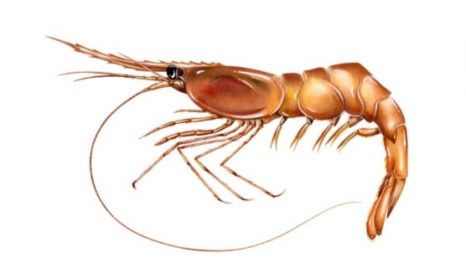
Shrimp stir up spat at commission meeting
For such tiny critters, northern shrimp can kick up quite a storm among fisheries regulators. Meeting in Portland last week, the Atlantic States Marine Fisheries Commission’s Northern Shrimp Section voted to continue the moratorium on shrimp fishing in the Gulf of Maine for another year. First imposed in 2013, the moratorium will remain in force for at least one more year. In an email, Department of Marine Resources spokesman Jeff Nichols said Commissioner Patrick Keliher “was very disappointed” with the proposal and voted against the research set-aside. click here to read the story 11:18
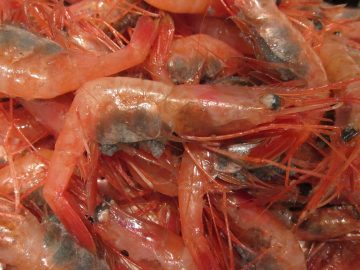
Maine objections couldn’t stop shrimp closure
Say this for Maine — both its state fisheries regulators and its shrimpers: They don’t like to lose. Last Wednesday, Maine got outvoted by Massachusetts and New Hampshire on whether interstate fisheries regulators should continue closing the Gulf of Maine to shrimping for the fifth consecutive year. Massachusetts and New Hampshire voted to keep it closed. Maine, hoping to sustain as much of its shrimp fishery’s infrastructure as possible, argued for a modest season despite the continued dire forecasts for the northern shrimp stocks — which, if possible — seem even worse than what NOAA Fisheries says about Gulf of Maine cod. click here to read the story 09:04

Losing hope for lobster south of Cape Cod
Tom Tomkiewicz remembers when there were so many lobster traps in Buzzards Bay it looked as if he could walk across the water on their buoys. Now, the 42-year-old lobsterman and his dwindling number of colleagues have to set their traps far out to sea, well beyond view of the coast, to catch the few lobsters that remain. “There’s nothing here,” said Tomkiewicz, one of only 35 Massachusetts lobstermen who still have permits to fish in the state and federal waters that stretch from Nantucket Sound to Long Island Sound. “It’s crazy.”,,, The steep decline has left regulators in a quandary click here to read the story 21:20

Gulf of Maine: What happens when a small Maine town and an offshore energy project collide
A project taking shape about 12 miles offshore from the village of Port Clyde is creating a rift in the tight-knit fishing communities on the St. George peninsula. On one side is Maine Aqua Ventus, a pilot project to test floating turbines as sources of renewable energy. On the other side are fishing families concerned that the turbines and cables used to transport the energy ashore could disrupt fishing habitats on which they rely.,,, “Our largest concern is what is going to happen after this,” said Randy Cushman, 55, a lifelong fisherman and resident of Port Clyde. “I’m worried about the next generation of fishermen, that’s what I’m worried about. I could really see them being eliminated by this. I really can.” click here to read the story 08:13
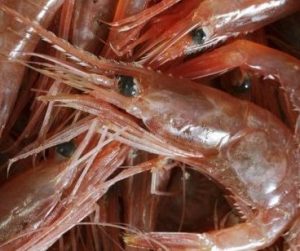
Northern Shrimp: Technical Committee recommends extending moratorium on fishing through 2018
In October, the agency that regulates shrimping in the Gulf of Maine, perhaps optimistically, approved measures that would limit northern shrimp allocations to individual states when and if the fishery ever reopens. The shrimp, or lack thereof, seem to be doing the best job of limiting those allocations. Next week, the Northern Shrimp Section, which regulates Gulf of Maine shrimping under the auspices of the Atlantic States Marine Fishery Commission, is expected to close northern shrimp fishing in the western Gulf of Maine for a fifth consecutive year. click here to read the story 14:12
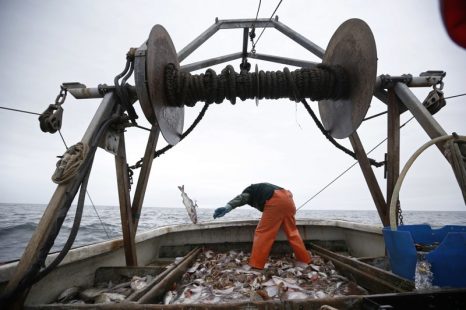
Omnibus Essential Fish Habitat Amendment – Plan to change New England ocean stewardship up for debate
The federal government is close to enacting new rules about New England ocean habitat that could mean dramatic changes for the way it manages the marine environment and fisheries. The National Marine Fisheries Service has been working on the rules for some 13 years and recently made them public. They would change the way the government manages the Gulf of Maine, Georges Bank and southern New England waters, which are critical pieces of ocean for rare whales, unique underwater canyons and commercial fishermen.,, The proposal states that its goal is to minimize “adverse effects of fishing on essential fish habitat.” click here to read the story 10:50
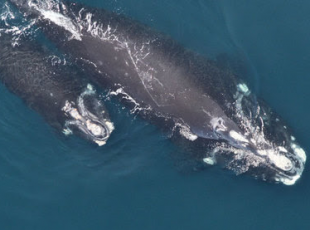
Right whale deaths spur regulators to eye fishing gear modifications
This has been a tough year for North Atlantic right whales. Late in October, according to the International Fund for Animal Welfare, the badly decomposed carcass of a right whale was found ashore on Nashawena Island, south of Cape Cod in Massachusetts. It was the 16th of the highly endangered species known to have died in U.S. or Canadian waters in 2017. Starting in the early spring and continuing through the late summer months, a dozen dead right whales were found floating in Canada’s Gulf of St. Lawrence.,,, Last year, the NOAA Fisheries Large Whale Take Reduction Team (TRT) began a five-year review click here to read the story 08:23
NOAA Approves State Water Exemptions for Scallop Fisheries in Maine and Massachusetts
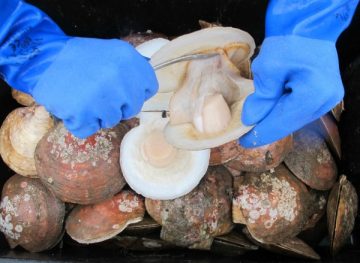 The State Waters Scallop Exemption Program allows federal permit holders to fish in the state waters scallop fishery on a more equitable basis where federal and state laws are inconsistent. The Program specifies that a state with a scallop fishery may be eligible for state waters exemptions from specific regulations if it has a scallop conservation program that does not jeopardize the objectives of the Atlantic Sea Scallop Fishery Management Plan. click here to read the press release 12:41
The State Waters Scallop Exemption Program allows federal permit holders to fish in the state waters scallop fishery on a more equitable basis where federal and state laws are inconsistent. The Program specifies that a state with a scallop fishery may be eligible for state waters exemptions from specific regulations if it has a scallop conservation program that does not jeopardize the objectives of the Atlantic Sea Scallop Fishery Management Plan. click here to read the press release 12:41
NEFMC commitee votes to protect corals in Gulf of Maine
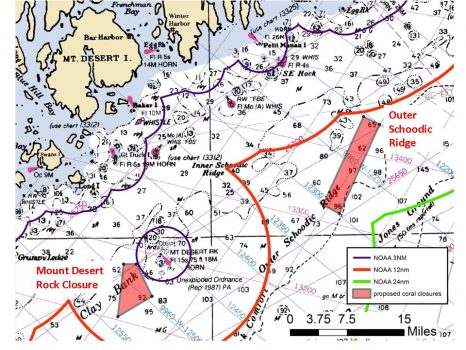 Federal regulars have decided to protect two areas in the Gulf of Maine that are home to slow-growing corals. The protected areas encompass almost 40 square miles and are called Outer Schoodic Ridge and Mt. Desert Rock. The areas would still be open to lobster fishing but not to bottom trawling. A committee of the New England Fishery Management Council voted on the protections on Thursday. click here to read the story 14:43
Federal regulars have decided to protect two areas in the Gulf of Maine that are home to slow-growing corals. The protected areas encompass almost 40 square miles and are called Outer Schoodic Ridge and Mt. Desert Rock. The areas would still be open to lobster fishing but not to bottom trawling. A committee of the New England Fishery Management Council voted on the protections on Thursday. click here to read the story 14:43
Fishing Industry, NEFSC Team Up for Gulf of Maine Longline Study
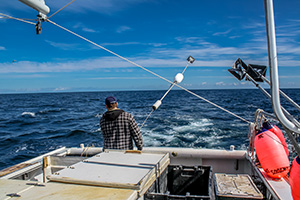 The Cooperative Gulf of Maine (GOM) Bottom Longline Survey is now underway for the fourth consecutive year. Two Massachusetts commercial longline fishing vessels and staff from the Northeast Fisheries Science Center’s (NEFSC) Cooperative Research Branch will be working in the Gulf of Maine over the next three weeks. They began staging October 5 on the 50-foot F/V Mary Elizabeth from Scituate and 40-foot F/V Tenacious II, which departed from Sesuit Harbor in East Dennis October 10 for the first of several two-to-four day trips. click here to read the story 14:28
The Cooperative Gulf of Maine (GOM) Bottom Longline Survey is now underway for the fourth consecutive year. Two Massachusetts commercial longline fishing vessels and staff from the Northeast Fisheries Science Center’s (NEFSC) Cooperative Research Branch will be working in the Gulf of Maine over the next three weeks. They began staging October 5 on the 50-foot F/V Mary Elizabeth from Scituate and 40-foot F/V Tenacious II, which departed from Sesuit Harbor in East Dennis October 10 for the first of several two-to-four day trips. click here to read the story 14:28
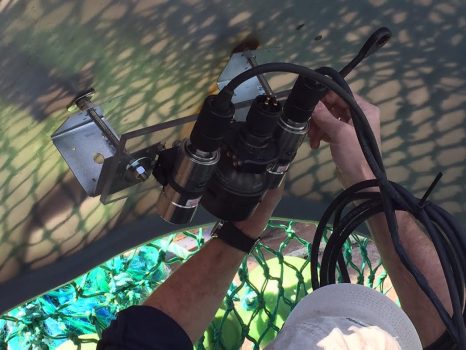
Live Cam May Show True Status of Atlantic Cod Fishery
Atlantic cod, New England’s most iconic fish, has been reported at historic lows for years, but fishermen hope a new video monitoring technique will prove there are more of the fish than federal surveyors believe. Ronnie Borjeson, who has been fishing for more than 40 years, says the federal surveys don’t match up with what fishermen are seeing. “I don’t care if you’re a gillnetter, a hook and line guy, a trawl guy,” he said, “there’s codfish everywhere up there. Everywhere. You can’t get away from them.” Borjeson helped test a video rig designed by researchers at the University of Massachusetts Dartmouth that allows them to record fish underwater and count them on the video later. With this rig, scientists can sample a larger area in the same amount of time and hopefully improve federal estimates of how many cod are left. click here to read the story 16:26
Counting Fish – A film by Don Cuddy click here to watch
Maine coastal villagers say cables from offshore wind project will wreck their way of life
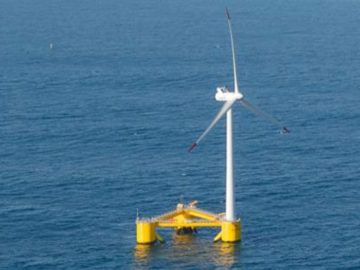 Opponents of an offshore wind project slated for development off Monhegan Island will take their fight to a new level Tuesday, when they plan to file a petition designed to prevent cables delivering electricity from the project to the mainland from passing through St. George. The group Preserve Our Remarkable Town, or PORT, says it has collected more than 300 signatures from residents of St. George, which includes the villages of Tenants Harbor and Port Clyde, who fear the the project will harm the local fishing industry and undermine the quality of life and property values in their communities. click here to read the story 19:39
Opponents of an offshore wind project slated for development off Monhegan Island will take their fight to a new level Tuesday, when they plan to file a petition designed to prevent cables delivering electricity from the project to the mainland from passing through St. George. The group Preserve Our Remarkable Town, or PORT, says it has collected more than 300 signatures from residents of St. George, which includes the villages of Tenants Harbor and Port Clyde, who fear the the project will harm the local fishing industry and undermine the quality of life and property values in their communities. click here to read the story 19:39
Maine lobster catch on track to hit lowest value this decade
 Maine’s 2017 lobster harvest is on pace to hit its lowest value this decade, due to an unfavorable combination of a dwindling catch and falling prices, according to lobster industry officials. The statewide haul for this year could plummet below 100 million pounds for the first time since 2010 — a decrease of more than 30 million pounds from 2016, said David Cousens, president of Maine Lobstermen’s Association. “This year we’re having is one of the worst we’ve had” in recent memory, Cousens said. click here to read the story 08:19
Maine’s 2017 lobster harvest is on pace to hit its lowest value this decade, due to an unfavorable combination of a dwindling catch and falling prices, according to lobster industry officials. The statewide haul for this year could plummet below 100 million pounds for the first time since 2010 — a decrease of more than 30 million pounds from 2016, said David Cousens, president of Maine Lobstermen’s Association. “This year we’re having is one of the worst we’ve had” in recent memory, Cousens said. click here to read the story 08:19
Storm brews over Maine’s monument offshore, too
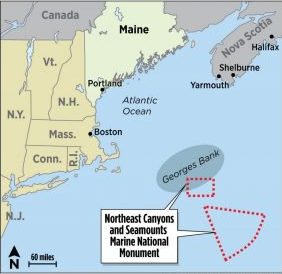 Zinke has recommended that the Northeast Canyons and Seamounts Marine National Monument – a 4,913-square-mile area of underwater canyons, thousand-year-old coral forests, and volcanic mountains on and beyond the southern edge of Georges Bank at the mouth of the Gulf of Maine – be opened to commercial fishing, a move proponents say would defeat its purpose.,, The heads of eight of the nation’s fisheries management councils – the industry-led bodies that implement fisheries regulations in federal waters – were already on record against the commercial fishing restrictions.,, Peter Shelley of the Conservation Law Foundation, an environmental attorney who is watching the case closely, strongly disagrees. click here to read the story 08:35
Zinke has recommended that the Northeast Canyons and Seamounts Marine National Monument – a 4,913-square-mile area of underwater canyons, thousand-year-old coral forests, and volcanic mountains on and beyond the southern edge of Georges Bank at the mouth of the Gulf of Maine – be opened to commercial fishing, a move proponents say would defeat its purpose.,, The heads of eight of the nation’s fisheries management councils – the industry-led bodies that implement fisheries regulations in federal waters – were already on record against the commercial fishing restrictions.,, Peter Shelley of the Conservation Law Foundation, an environmental attorney who is watching the case closely, strongly disagrees. click here to read the story 08:35
Gloucester Fishermen to council: Trust in data needed
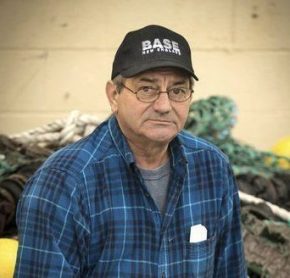 One by one, the Gloucester fishermen settled in front of the microphone for those with something to say to the New England Fishery Management Council and, one by one, they delivered their thoughts. Some of the remarks, such as those from Tom Orrell of Yankee Fleet and Paul Vitale, captain of the Angela & Rose, were short and to the point. Orell wanted to know why the for-hire boats faced so many restrictions in the Gulf of Maine and Vitale simply wants more fish quota. Now. Joe Orlando of the Santo Pio talked science and cod, while longtime fishermen Al Cottone and Rick Beal (powerful comment) adopted more philosophical tones, speaking to the council on the need for a two-lane channel of trust and truth. click here to read the story 20:59
One by one, the Gloucester fishermen settled in front of the microphone for those with something to say to the New England Fishery Management Council and, one by one, they delivered their thoughts. Some of the remarks, such as those from Tom Orrell of Yankee Fleet and Paul Vitale, captain of the Angela & Rose, were short and to the point. Orell wanted to know why the for-hire boats faced so many restrictions in the Gulf of Maine and Vitale simply wants more fish quota. Now. Joe Orlando of the Santo Pio talked science and cod, while longtime fishermen Al Cottone and Rick Beal (powerful comment) adopted more philosophical tones, speaking to the council on the need for a two-lane channel of trust and truth. click here to read the story 20:59
Northern Shrimp plan changes advance
 Meeting in Portland at the end of August, the Atlantic States Marine Fisheries Commission’s Northern Shrimp Section selected several final measures for inclusion in the latest revision to the Fishery Management Plan for northern shrimp. Known as “Amendment 3,” the latest version of the plan will bring about a number of significant changes to the way the fishery is managed — if indeed the northern shrimp fishery is ever resuscitated. Because fisheries scientists believed that the northern shrimp population had collapsed, commercial shrimp fishing on the Gulf of Maine has been banned since 2014 with only an extremely limited harvest for scientific data collection purposes permitted. click here to read the story 08:52
Meeting in Portland at the end of August, the Atlantic States Marine Fisheries Commission’s Northern Shrimp Section selected several final measures for inclusion in the latest revision to the Fishery Management Plan for northern shrimp. Known as “Amendment 3,” the latest version of the plan will bring about a number of significant changes to the way the fishery is managed — if indeed the northern shrimp fishery is ever resuscitated. Because fisheries scientists believed that the northern shrimp population had collapsed, commercial shrimp fishing on the Gulf of Maine has been banned since 2014 with only an extremely limited harvest for scientific data collection purposes permitted. click here to read the story 08:52
2017 Sweep Efficiency Study Targets Summer Flounder – Cooperative research program effort reveals a few surprises
 Testing the efficiency of different sweep types on fishing nets was the focus of twin trawling operations August 18-28 aboard the F/V Karen Elizabeth from Point Judith, RI. Chris Roebuck and his four-person crew aboard the 78-foot western-rigged stern trawler Karen Elizabeth conducted this year’s study with five staff members from the NEFSC’s Northeast Cooperative Research Program and the Fisheries Ecology and Oceans and Climate branches. The team targeted summer flounder in Southern New England from Montauk, Long Island to Nantucket and red hake in the western Gulf of Maine off Cape Ann, making a total of 103 good tows and collecting over 73,000 fish from species targeted by the study. click here to read the story 11:41
Testing the efficiency of different sweep types on fishing nets was the focus of twin trawling operations August 18-28 aboard the F/V Karen Elizabeth from Point Judith, RI. Chris Roebuck and his four-person crew aboard the 78-foot western-rigged stern trawler Karen Elizabeth conducted this year’s study with five staff members from the NEFSC’s Northeast Cooperative Research Program and the Fisheries Ecology and Oceans and Climate branches. The team targeted summer flounder in Southern New England from Montauk, Long Island to Nantucket and red hake in the western Gulf of Maine off Cape Ann, making a total of 103 good tows and collecting over 73,000 fish from species targeted by the study. click here to read the story 11:41
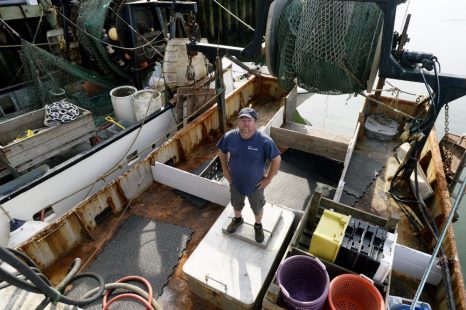
Maine fishermen, scientists combine forces with goal to save shrimp fishery
For more than 20 years, Dana Hammond made close to half his annual income shrimping. But his shrimping profits began to dwindle in 2013. That season, regulators were alarmed by the lack of shrimp biomass in the Gulf of Maine, and the amount he was allowed to catch was cut 72 percent. The fishery was closed entirely in 2014. It hasn’t reopened since and Hammond, who fishes out of Portland on his boat the Nicole Leigh, has been trying to make up the deficit from his other main source of income, groundfishing. But Hammond isn’t ready to let shrimping go. click here to read the story 09:22
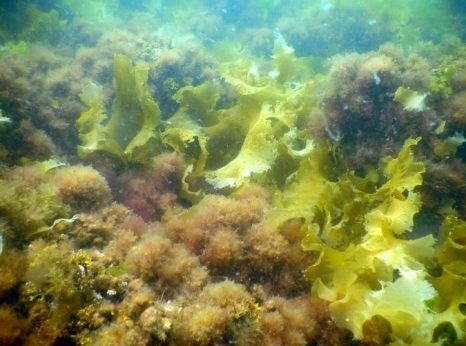
Invasive seaweed threatens Gulf of Maine
A team of University of New Hampshire researchers working on Appledore Island at the Isles of Shoals and at off-shore sites in southern York County and Seacoast New Hampshire recently published a study that reaches some unsettling conclusions. Essentially, the ocean floor in the Seacoast is seeing a marked decline in the often tall, leafy native kelp populations and an inundation of short, shrub-like invasive seaweed. Key among those invasives is the short, red fiber-like seaweed Dasysiphnia japonica, a transplant from Japan that is taking over the ocean floor in this region – covering as much as 90 percent of some areas. We were very surprised by what we saw,” said Jennifer Dijkstra, research assistant professor in the Center for Coastal and Ocean Mapping at UNH and the lead author of the study. click here to read the story 09:20
NEFMC Postpones Coral Action for Continental Slope/Canyons, adopts GoM Coral Protection Zones
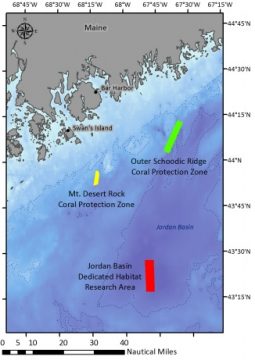 The New England Fishery Management Council today adopted coral pretection zones for the Gulf of Maine as part of its Omnibus Deep-Sea Coral Amendment. However, it postponed action for the Continental Slope south of Georges Bank in order to further develop an additional alternative. The councils Plan Development Team (PDT) will work with the Habitat Advisory Panel to further refine this new alternative. The councils Habitat Committee will then review the results and develop a recommendation to the full council to consider. The timing of the action is uncertain. Click here to read the press release 17:43
The New England Fishery Management Council today adopted coral pretection zones for the Gulf of Maine as part of its Omnibus Deep-Sea Coral Amendment. However, it postponed action for the Continental Slope south of Georges Bank in order to further develop an additional alternative. The councils Plan Development Team (PDT) will work with the Habitat Advisory Panel to further refine this new alternative. The councils Habitat Committee will then review the results and develop a recommendation to the full council to consider. The timing of the action is uncertain. Click here to read the press release 17:43
Hearing on new shrimp rules draws tiny crowd in Ellsworth
 Fishermen barely outnumbered representatives of the Atlantic States Marine Fisheries Commission last Thursday at a public hearing in City Hall on proposed rule changes that would reshape shrimp fishing in the Gulf of Maine. Three fishermen — John Williams and Ricky Trundy, both of Stonington, and James West of Sorrento — offered comments on a proposed amendment to the ASMFC fisheries management plan for northern shrimp. Department of Marine Resources External Affairs Director Terry Stockwell and Resource Management Coordinator Trisha Cheney dutifully recorded those comments on behalf of the ASMFC. Although a somewhat larger crowd was on hand for a hearing the previous evening in Augusta, the sparse audience reflected the state of the fishery from Downeast waters. click here to read the story 12:34
Fishermen barely outnumbered representatives of the Atlantic States Marine Fisheries Commission last Thursday at a public hearing in City Hall on proposed rule changes that would reshape shrimp fishing in the Gulf of Maine. Three fishermen — John Williams and Ricky Trundy, both of Stonington, and James West of Sorrento — offered comments on a proposed amendment to the ASMFC fisheries management plan for northern shrimp. Department of Marine Resources External Affairs Director Terry Stockwell and Resource Management Coordinator Trisha Cheney dutifully recorded those comments on behalf of the ASMFC. Although a somewhat larger crowd was on hand for a hearing the previous evening in Augusta, the sparse audience reflected the state of the fishery from Downeast waters. click here to read the story 12:34
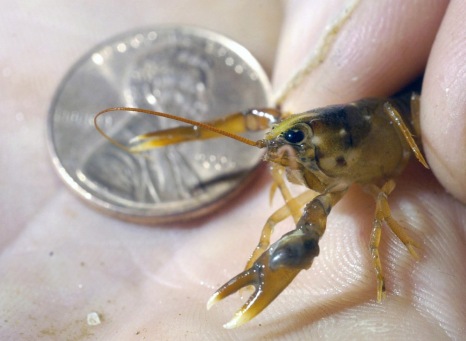
A mystery is born: Where are all the baby lobsters?
Biologists and lobstermen are growing increasingly worried that the state’s most valuable fishery, which in recent years has boasted record volume and value and accounts for more than 80 percent of Maine’s fishing profit, is about to go bust, a doomsday economic scenario some call the curse of the “gilded trap.” At the center of their concern: The number of baby lobsters found in the Gulf of Maine continues to fall. “We call it the great disconnect,” said Joshua Carloni, New Hampshire’s state lobster biologist. “And as you can imagine, it has us concerned.”,,, The Seabrook tows found a decline in copepods – tiny planktonic crustaceans that are most likely a staple of the lobster larval diet click here to read the story 08:14
Fish in the Northwest Atlantic Are Going Hungry – New Science From Maine’s Department of Marine Resources Helps To Explain Why. click here to read the article


































